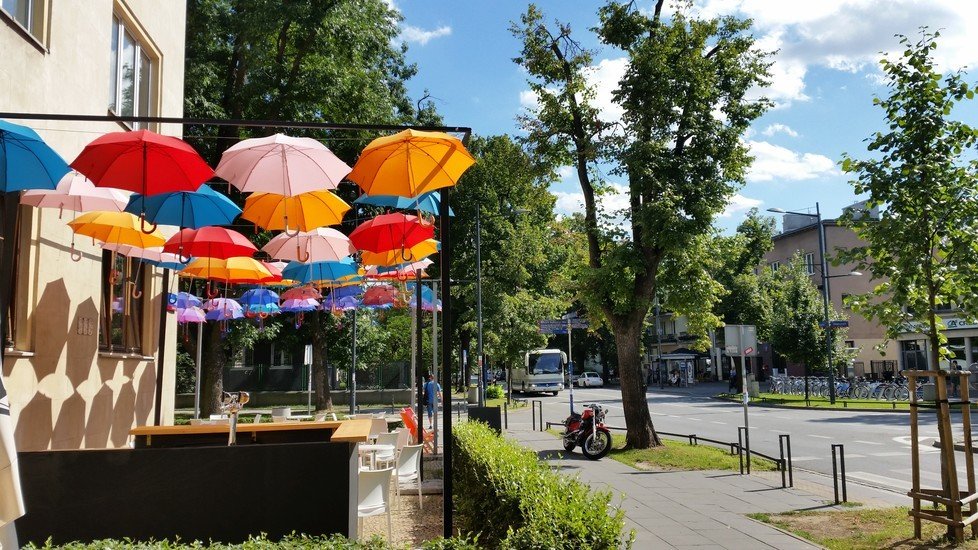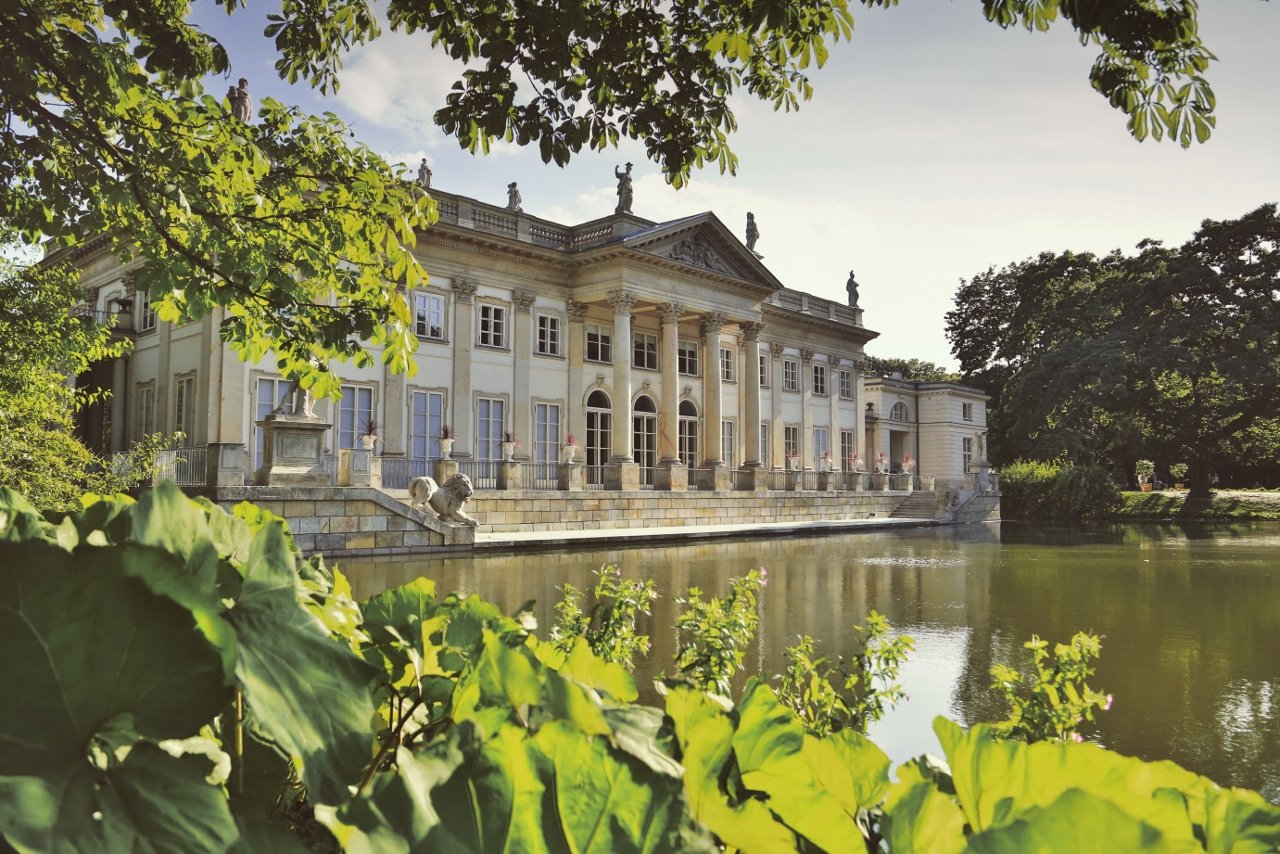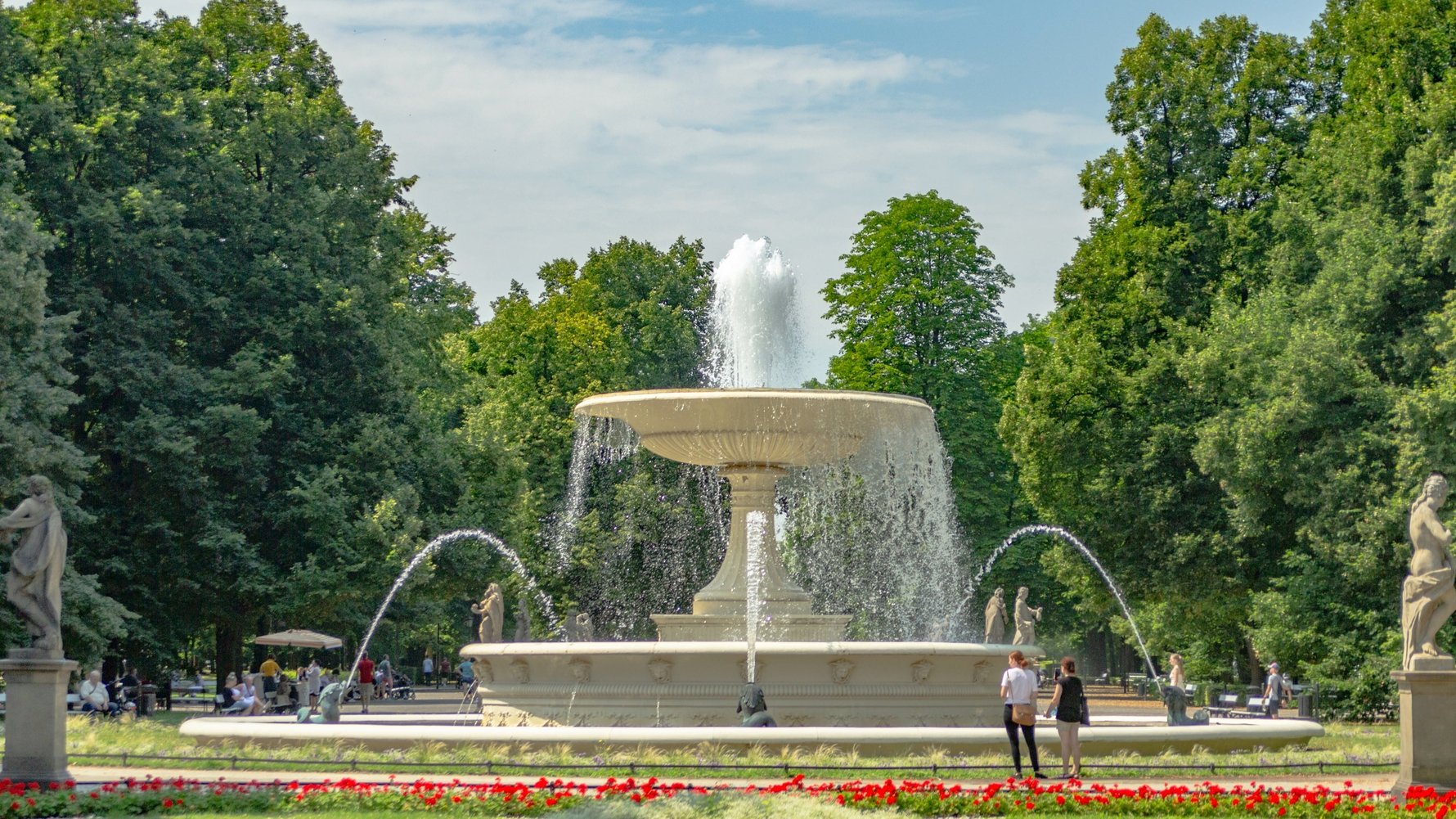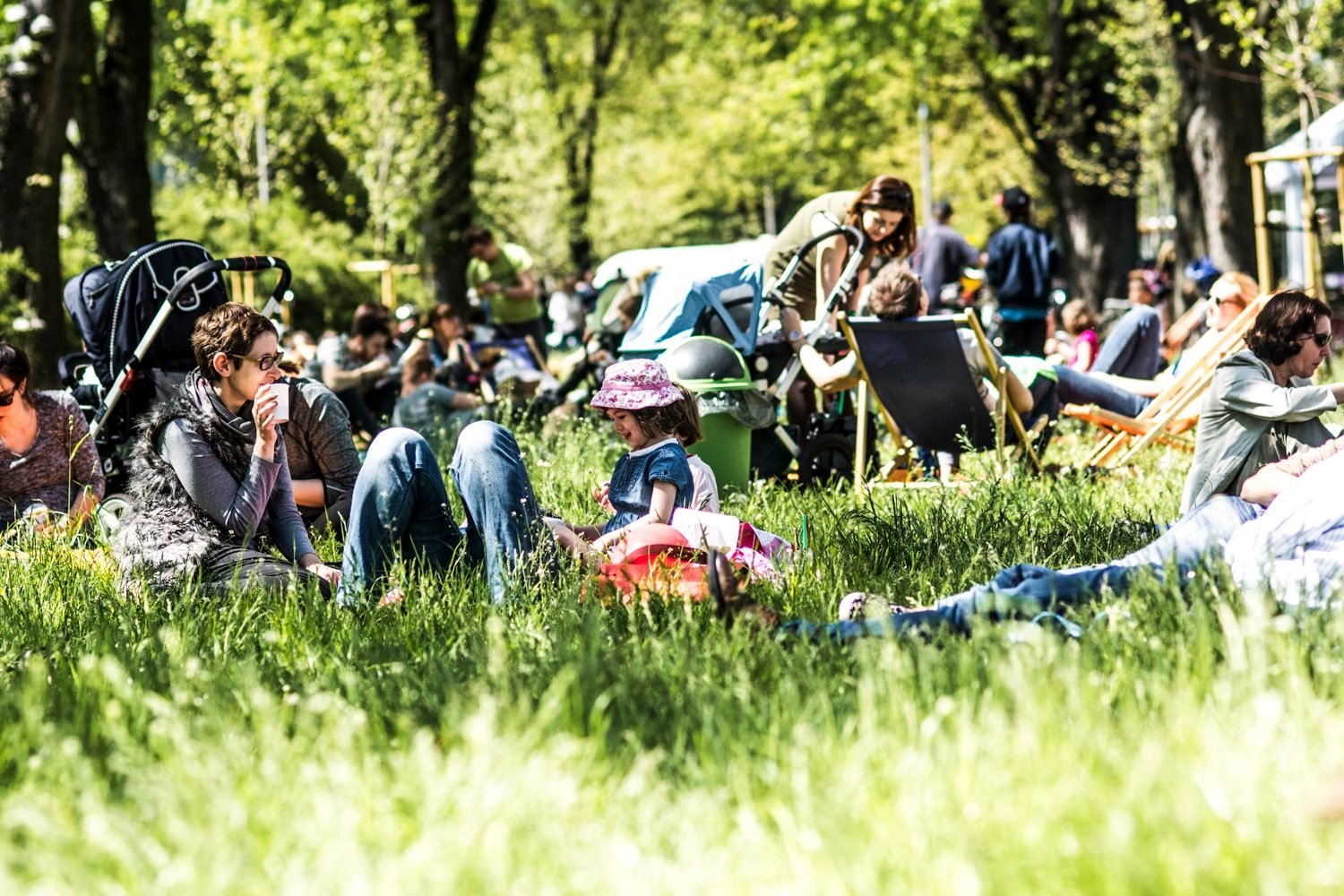For many Poles, spring is the ultimate time of year, partly because the winters are so tough, but also because the springs are just that gorgeous. So, while it’s certainly a great time to travel, but it's an even better time to experience the blooming world of Warsaw!
Sip a coffee at a cafe
Yes, we know that Kraków is renowned for its cafe culture, but in our opinion, Warsaw is really where it's at for coffee! All friendly rivalry aside, Warsaw really does have some great cafes. If you’re in the Old Town, check out nearby Cafe Bristol, which somehow manages to combine a chic, fancy vibe with a comfortable and cozy atmosphere. Another in the area is To Lubię, which offers tasty pastries and cappuccinos in a medieval-esq space (fitting that it’s in the Old Town!)Or travel a little south and go to Slodki Slony, which abounds with colorful decor and delicious pastries, cakes and more, all packed into a small cafe bursting with floral designs (bringing the spring vibes inside). For outdoor seating, look no further than Francuska 30 in Saska Kępa. Affectionately known as "the umbrella cafe" for their canopy of colorful umbrella decorations, this is also packed with tons and tons of outdoor seating, and the combo of sun, coffee and a tasty goat cheese pastry couldn't be better.

Urban Parks & Greenery
The 2018 Travelbird Green Cities Index ranked Warsaw as the 12th greenest city in the world, while the Husqvarna Urban Green Space Index ranks Warsaw 18th out of 171 European cities; the only cities of over 1 million inhabitants that rank higher are Prague, Hamburg and Munich. With 51% of the city covered in greenery for an average of 134.4m2 of green space per resident, Warsaw well exceeds the likes of New York City (19m2) or Paris (a pathetic 9.8m2), despite the two metropolises having iconic urban parks. Though they may not be as famous, Warsaw is home to its share of iconic parks as well, so let’s take a look at the best places in the capital to celebrate spring, and do some sightseeing while we’re at it.
Łazienki Park
Where else would we start? Łazienki is not only Warsaw’s most famous park, but also its largest at 76ha, and right in the city centre. This glorious green space is not only home to peacocks and adorable red squirrels, but is also packed with 18th century palaces, monuments and royal art collections. In fact, the lush, hilly premises are a bit of an architectural scavenger hunt where you can find Warsaw’s oldest theatre, a Greek temple, Egyptian temple, Chinese Garden, and much more. Beginning in mid-May, locals flock to Łazienki with blankets and picnic baskets to hear free open-air piano concerts under the park’s famous Chopin monument every Sunday at 12:00. Read our full feature dedicated to Łazienki for all details on what to see and do at this beautiful park and palace complex.Saxon Garden
Located just off the Royal Route, this historic 15.5ha park is the oldest in the city, and became one of the first public parks in the world when it opened to everyone in 1727. At that time it was a Baroque Park in the French-style with the grandiose Saxon Palace playing a role very similar to the Palace of Versailles in Paris’ famous park. Like Łazienki, the park also included several other palaces and pavilions, all of which were sadly obliterated by the Nazis during WWII and never rebuilt. Despite this absence, Saxon Garden today is one of Warsaw’s best urban retreats, offering an antidote to the capital’s urban din, plenty of shade, lots of benches and more than a few points of interest.Foremost among the latter is the Tomb of the Unknown Soldier - the only surviving remnant of Saxon Palace and once part of its lower colonnade. Here the ashes of unidentified soldiers who died for the Polish cause are interred and an eternal flame is kept lit and guarded by stone-faced soldiers. If you enjoy a bit of military theatre, you can watch the official changing of the guard every hour, on the hour, 365 days a year.

More impressive (in our opinion) is the large fountain located just behind the Tomb of the Unknown Soldier. Created in 1855 by renowned Warsaw architect Henryk Marconi, this fountain is and was the centrepiece of the gardens, the alleys of which are lined with blooming flowers, ancient trees (many of which survived the war) and neoclassical sculptures.
Lastly, in the northwestern part of the park, on a little hill, you’ll find the park’s Water Tower, also designed in 1825 by Marconi. If the structure reminds you of an ancient Roman building you’re quite right – it’s modelled on the famous Temple of Vesta in Tivoli.
Skaryszewski Park

If you're not that keen on monuments, that's fine, too, as this park is known as the chiller cousin of Łazienki, meaning you will find many people lying in the grass, reading books, having picnics, sipping some wine or coffee and enjoying the sunlight here.
Located next to the popular district of Saska Kępa, the southwest corner of the park leads right to the neighbourhood’s trendy high street, ul. Francuska, where you’ll find plenty of hip cafes and restaurants, as well as some of the best ice cream in the city. Fans of modernist architecture and charming villas are encouraged to explore this affluent but artsy area.
Outdoor Food Fairs
The arrival of warmer weather is also the signal for Warsaw’s outstanding open-air food markets to resume operations. An increasingly popular urban trend, these hip gastro markets are as much about socialising as they are about shopping for local food products or filling your belly, and definitely worth checking out if you’re brave enough to go beyond the centre of town. If you’re here ahead of the season or the weather’s rubbish, you can (and should) always check out one of the city’s plentiful indoor food halls as well.
Breakfast Market
They say it’s the most important meal of the day, but in Warsaw it’s also a cultural experience. We’re talking about the Breakfast Market (Targ Śniadaniowy), which offers foodies a range of delicious day starters from dozens of local food producers, farms, restaurants and catering companies. Taking place in neighbourhood parks, mingle with locals, explore new parts of town and get your grub on by creating a picnic spread from the fresh foods on sale here, or choose from an array of ready-to-eat meals from local producers as well. A highly social event, the Breakfast Market caters to families by organising events for kids and other attractions. Best of all, you don’t have to get there early. Occurring on weekends from 9:00-16:00 you’ll find the Breakfast Market near Plac Inwalidów (corner of Al. Wojska Polskiego and ul. Śmiała) in the leafy Żoliborz area; on Sundays from 10:00-17:00, the Market moves to the park area of Skwer AK Granat in Mokotów.www.targsniadaniowy.pl



Comments